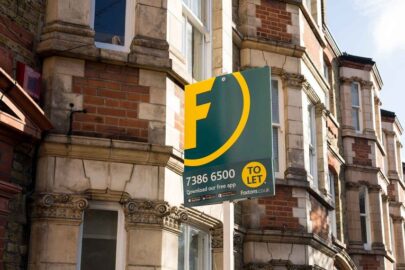There has been a lot talked about, and written on, the buy-to-let market in recent weeks, and understandably so.
From the queues of students in many University towns and cities trying to get hold of accommodation for their next year of study, to the rent freeze in Scotland, the lack of supply across the PRS and what this is meaning for many tenants and their rents, to the recent increases to mortgage rates and how this impacts on landlord costs and ultimately property profitability.
The PRS and the buy-to-let market is a hot topic because it provides housing to almost 4.5 million households in the UK, and the real concern is how the supply of those homes holds up, and what it might mean for the housing gap if it doesn’t.
There is an assumption that those who couldn’t get on the property ladder were hobbled by a lack of supply.
That is, to some extent right, however by far the biggest obstacles to buying have been a combination of saving enough for a deposit, accessing high LTV mortgages, meeting tighter affordability measures, all against a backdrop of lower wage growth particularly when compared to the rise in house prices we have seen. In itself a result of a lack of supply of housebuilding.
We all know there is an interconnectedness to our market, which is often either forgotten and/or overlooked. The above has meant those people who can’t purchase homes still need somewhere to live, which means they need homes in the PRS, at a time when landlords’ ability to provide these homes has been hampered by a variety of measures including increased stamp duty costs, rising tax, falling interest relief, etc.
What all of the above has meant, is a reappraisal – particularly by individual landlords – of how they could keep on offering properties to the PRS and whether they were in a position to add to portfolios given the current situation and the increase in mortgage interest costs.
Now, of course, this is not to say that a large number of landlords haven’t been able to bridge this gap. To keep their properties available, and indeed to add more, however this is much more likely to be done by portfolio/professional landlords and as a result we have seen a dip in those ‘amateur’ landlords which comes at a time when demand for PRS properties has continued to increase.
We await to see just what the rental freeze in Scotland will do to property numbers there. If history is any kind of precedent, especially for those who are coming up to a refinance period, it is likely to mean further sales of rental properties that may not make it back into the PRS. Particularly, as mentioned, those who only own one or two properties and who may come to the conclusion they simply can’t afford to keep renting them out with the inevitable higher mortgage costs.
Overall, while this feels like a tricky time for the PRS, it has some positives. Landlords are still acquisitive – it’s just that we now have fewer of them and buying property is now more expensive for the reasons outlined above. Clearly, rising mortgage costs have played a part over the past couple of months, however there are signs of rates coming off recent highs and we anticipate this will continue particularly into the new year when lenders begin trying to hit targets again.
Plus, of course, expectations around rate rises and peaks have been dampened and the measures announced in the Budget might continue this trend. Inflation is expected to fall in mid-2023 by a significant margin, and this should feed into product pricing which hopefully makes it more appealing for landlords and ensures they can continue to run profitability.
Mark Whitear is director of commercial development at Foundation Home Loans
